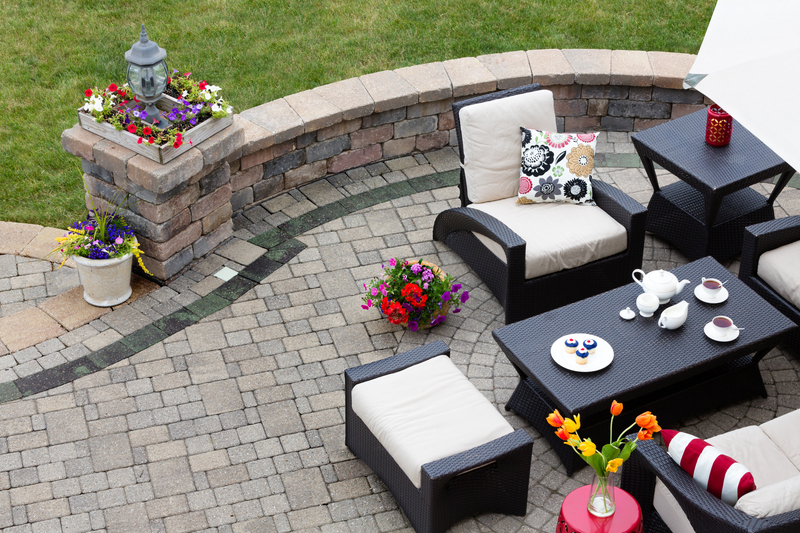Creative Ways to Shield Your Garden from Harsh Winds
Posted on 05/06/2025
Creative Ways to Shield Your Garden from Harsh Winds: Innovative Solutions for a Protected Oasis
Gardening is a labor of love, but nothing can curb your enthusiasm more than harsh winds wreaking havoc on your plants. Whether you have a small urban oasis or a sprawling backyard, protecting your garden from strong winds is crucial for healthy, thriving plants. In this guide, we'll explore creative and effective methods to shield your garden from wind, ensuring your plants stay upright, undamaged, and beautiful all season long.

Why Wind Protection Matters for Your Garden
Before diving into creative ways to block wind in your garden, it's essential to understand the damage wind can inflict.
- Physical Damage: High winds can snap stems, break branches, and uproot shallow-rooted plants.
- Moisture Loss: Wind accelerates evaporation, drying out your soil and leaves, leading to water stress.
- Pest and Disease Spread: Winds can spread spores and pests, facilitating the rapid transfer of diseases throughout your garden.
Understanding Wind Patterns in Your Garden
Not all gardens are affected by wind in the same way. Start by identifying the prevailing wind direction in your region and observe how your garden layout channels or blocks the wind.
- Tip: A windsock or flag can help you track wind direction and strength over several days.
- Analyze existing structures such as fences, walls, and trees to determine how they alter wind flow.
- Draw a simple map of your garden, marking problem areas where plants appear wind-stressed or soil dries out quickly.
Natural Windbreaks: The Eco-Conscious Solution
1. Planting Hedges and Shrubs for Wind Protection
One of the most eco-friendly ways to block wind in your garden is by planting a living windbreak. Dense hedges and shrubs slow down and filter wind, offering gentle protection rather than an abrupt barrier.
- Choose the Right Plant Species: Opt for evergreen varieties like boxwood, holly, privet, or arborvitae for year-round shelter.
- Layer Plantings: Plant a mix of trees, tall shrubs, and lower bushes for a more effective wind filter.
- Stagger Rows: Stagger your plantings to avoid creating a wind tunnel effect. Overlap multiple rows for better coverage.
Not only do hedges beautify your landscape, but they also provide habitat for beneficial insects and birds.
2. Fast-Growing Trees as Natural Barriers
- Select Trees Suited to Local Conditions: Trees like willo, poplar, cypress, and cedar grow quickly and develop dense foliage, offering substantial windbreak benefits.
- Spacing is Key: Plant trees at recommended distances to allow proper growth and ensure adequate wind buffering.
- Remember: Deciduous trees lose their leaves in winter, so mix them with evergreens for year-round protection.
Artificial Windbreaks: Quick and Customizable Solutions
3. Garden Fences with a Twist
Traditional fences are a straightforward option, but with some creativity, they can become highly effective wind shields for your backyard.
- Permeable Panels: Fences with gaps, latticework, or slatted wood allow air to pass through, reducing wind speed and turbulence compared to solid barriers.
- Add Climbing Plants: Train vines like clematis, ivy, or jasmine to cover fences, enhancing their wind-filtering ability and adding lush greenery.
- Color and Texture: Choose different paint finishes or materials (wicker, bamboo, recycled plastic) for visual impact as well as wind protection.
4. Decorative Screens and Trellises
If you crave garden wind protection with style, install decorative screens or trellises.
- Moveable Privacy Screens: These lightweight options can be repositioned as needed and often come in modern designs.
- DIY Trellis Walls: Build trellises for both form and function. Position them strategically along windward sides and let climbing flowers or vegetables take over.
- Materials Matter: Choose sturdy wood or metal frames to withstand frequent wind exposure.
5. Installing Windbreak Netting or Garden Fabric
Netting or windbreak garden fabrics are invaluable for shielding delicate crops from wind. They're ideal in urban community gardens or exposed rural plots.
- Easy to Adjust: Secure netting to poles around your planting beds, adjusting the height as your plants grow.
- Temporary or Permanent: Choose heavy-duty materials for perennial installations or lightweight nets for quick, seasonal fixes.
- Additional Benefits: Windbreak fabrics can also provide some shade and protection from pests.
Smart Layouts: Designing Your Garden with Wind in Mind
6. Garden Bed Placement for Maximum Wind Shelter
You can shield your raised beds or planters from wind simply by smart placement:
- Use Existing Barriers: Place beds near walls, fences, or sheds to maximize shelter from prevailing winds.
- Height Matters: Taller plants or vertical structures (like trellises) on the windward side protect shorter, more vulnerable crops.
- Staggering Beds: Avoid long, narrow rows perpendicular to the wind, which can funnel gusts. Staggered patterns disrupt wind flow.
7. Wind-Sheltered Microclimates
Creating microclimates--areas with slightly different conditions--can help vulnerable plants survive windy weather.
- Cluster Plantings: Group delicate or wind-sensitive plants together to create pockets of protection.
- Leverage Hardscape Elements: Large rocks, sculptures, or water features can all serve as decorative wind buffers.
- Tip: Use thick mulch or ground-cover plants to insulate soil from moisture loss due to wind.
DIY Wind Barriers: Budget-Friendly, Quick Fixes
8. Repurposed Objects as Windbreaks
Upcycle everyday items for a creative, eco-conscious approach to garden wind protection:
- Pallets: Old wood pallets can be secured vertically for a rustic, casual wind barrier.
- Bamboo Screens: Use rolled bamboo fencing for a lightweight, natural alternative.
- Recycled Metal Sheets: Corrugated panels provide robust shelter and visual interest.
9. Wind-Proof Cloches and Plant Covers
- Dome-Shaped Cloches: These clear covers shield seedlings and small plants from gusts and chills.
- DIY Milk Jug Cloches: Cut the bottoms off plastic jugs and place them over vulnerable plants for instant protection.
- Wire Hoops with Fabric: Drape garden fleece or mesh over wire hoops to create tunnel-like wind barriers for entire plant rows.
10. Portable Windbreak Panels
For adaptable protection, build or buy portable windbreaks:
- Lightweight Frames: Use PVC pipes or wood to make frames, then staple on shade cloth or mesh.
- Easy to Move: Move panels to where your plants need them most as seasons and wind directions change.
- Multi-Purpose: Some portable windbreaks can also serve as shade, frost protection, or privacy screens.
Long-Term Strategies for Lasting Wind Protection
11. Combining Multiple Windbreak Solutions
The most effective approach often involves layering several methods--mix natural plantings with artificial screens and smart garden layouts for optimal protection.
- Create Buffer Zones: Use hedges at your property edge, with fences or screens closer to garden beds.
- Rotate Materials: Adapt your windbreak strategies as your garden evolves and weather patterns change.
- Monitor and Adjust: Assess the effectiveness of your efforts after storms and high wind events, adjusting layouts or replacing damaged barriers as needed.
12. Maintaining Healthy, Resilient Plants
Healthy plants withstand wind better! To further enhance your garden's wind resistance:
- Deep, Regular Watering: Ensures roots anchor firmly in the soil.
- Proper Staking and Tying: Use garden stakes and soft ties for top-heavy or young trees.
- Prune Wisely: Remove weak branches; thin dense crowns to reduce wind drag.

Frequently Asked Questions About Garden Wind Protection
What is the most effective windbreak for a large garden?
A mix of tall trees and dense shrubs creates a wind-filtering barrier that works year-round. Evergreens are especially useful in areas with winter wind, while layered plantings slow and diffuse wind energy.
Can I use temporary barriers for seasonal wind?
Absolutely. Windbreak netting, fabric, and portable panels are ideal for seasonal storms or protecting tender seedlings in spring.
Do solid fences work for wind protection?
Solid fences stop wind bluntly, which can create turbulence on the sheltered side. Permeable or slatted barriers slow wind more gently, offering better overall protection for plants.
Conclusion: A Garden that Thrives, No Matter the Weather
With a blend of creative strategies to shield your garden from harsh winds, you can enjoy a lush, productive landscape, regardless of blustery weather. Experiment with living windbreaks, stylish fencing, smart layouts, and DIY solutions to discover what works best for your space. Your plants--and your peace of mind--will thank you!
Protect and nurture your garden with these innovative wind-blocking techniques, and watch your outdoor sanctuary bloom, season after season.

